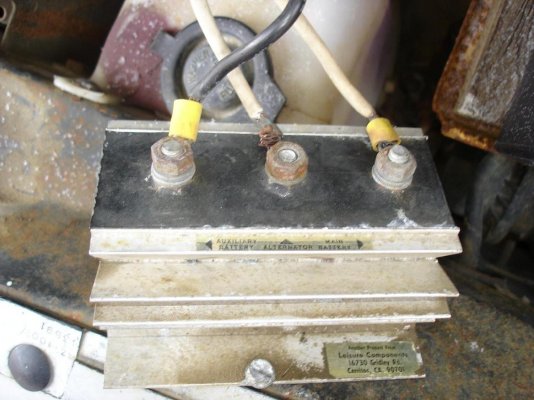bainer1290
Well-known member
- Joined
- Dec 2, 2007
- Posts
- 61
Hello
Well we just bought our first RV a few weeks back and I'm in the process of getting it ready for the spring. The seller mentioned that the rear batteries need to be replaced and for some reason they are overcharging. The front battery is fine and is not getting to much voltage, but the back batteries seem to be getting about 16 volts. I think the correct range is about 13-14? Anyways the seller was trying to figure it out and so far he has replaced the alternator and the voltage regulator. Is there just one voltage regulator? The one he replaced is mounted just above the engine on the firewall.
I have been doing some research and I see there is some sort of aluminum block mounted on the upper rad support that looks like it is some sort of distribution block for charging the rear and front batteries separately. What is this thing called? Could it be the problem? What else could it be?
Thank you,
Rob
Well we just bought our first RV a few weeks back and I'm in the process of getting it ready for the spring. The seller mentioned that the rear batteries need to be replaced and for some reason they are overcharging. The front battery is fine and is not getting to much voltage, but the back batteries seem to be getting about 16 volts. I think the correct range is about 13-14? Anyways the seller was trying to figure it out and so far he has replaced the alternator and the voltage regulator. Is there just one voltage regulator? The one he replaced is mounted just above the engine on the firewall.
I have been doing some research and I see there is some sort of aluminum block mounted on the upper rad support that looks like it is some sort of distribution block for charging the rear and front batteries separately. What is this thing called? Could it be the problem? What else could it be?
Thank you,
Rob

